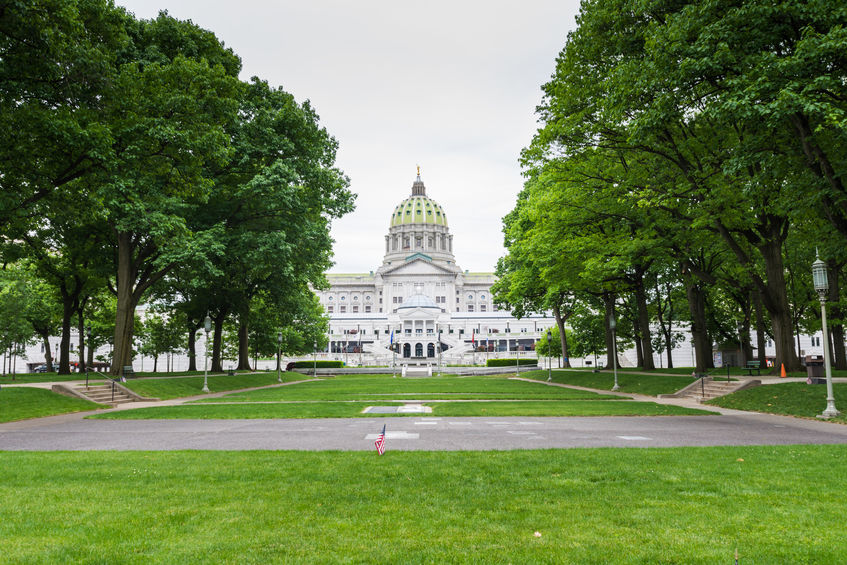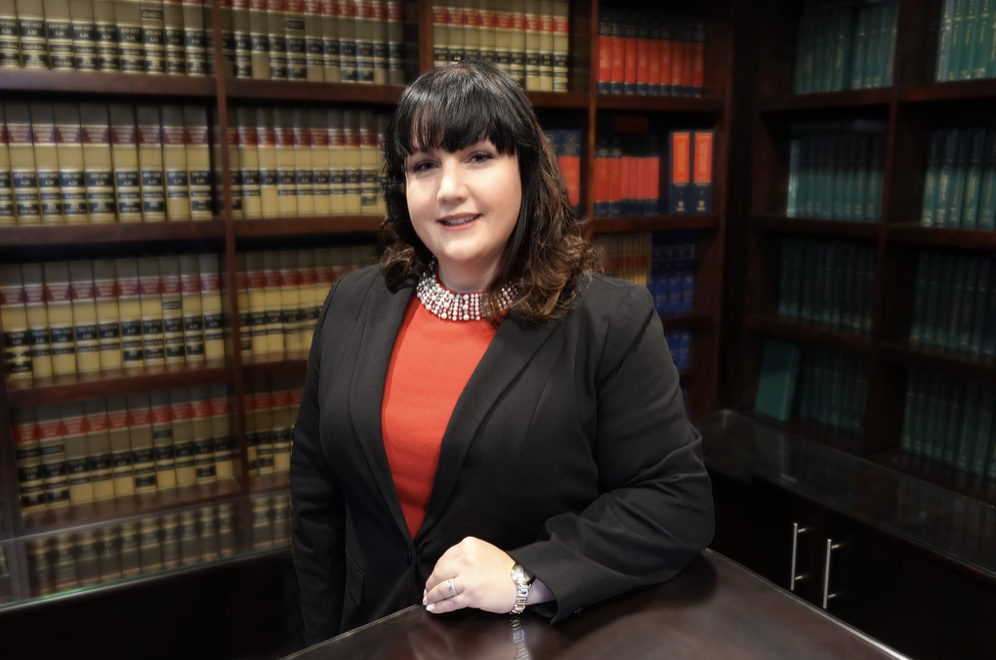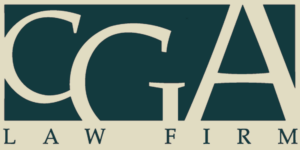
Final Interim Rule Released
On May 10, 2021, the U.S. Department of the Treasury (Treasury) announced a Final Interim Rule and additional guidance on the use of funding that will be provided to local governments as a part of the American Rescue Plan Act of 2021 (Act). Under the Act, most municipalities in the Commonwealth of Pennsylvania are considered non-entitlement units because they have populations of less than 50,000. There are only eight reported townships or boroughs within the Commonwealth that do not meet the definition of a non-entitlement unit, and will receive funding directly from the Treasury.
As we first reported back in March local municipalities, because of this designation will receive funding not directly from the Federal Government but rather from the Commonwealth after it receives the funds allocated for the non-entitlement units of the Commonwealth. Municipal Authorities are not included under the Act and will only receive funding from the Act if a local municipality chooses to transfer some or all of its received funding to a Municipal Authority. Funds that are transferred must be used for an eligible use under the Act and both the local municipality and the transferee remain responsible for the proper use of the funds and reporting.
The Commonwealth is set to receive $983,008,128.00 that will then be divided and allocated to each local municipality based on the municipality’s population. States may not place additional conditions or requirements on fund distributions to local municipalities beyond those required by the Act or regulations from the Treasury. The Treasury plans to release more information about the distribution of funding to local municipalities in the coming days.
Currently, there is no application process that local municipalities are required to complete to receive the funds, only those larger units of government like the Commonwealth or cities are required to request funds within the Treasury’s Submission Portal. Each local municipality will need to have a Dun & Bradstreet number (DUNS) for the reporting requirements. A DUNS number is not required by the Treasury for a local municipality to receive funds. However, if your municipality does not already have a valid DUNS number you should register for one by either visiting https://fedgov.dnb.com/webform/ or by calling 1-866-705-5711.
The Final Interim Rule has increased the length of time for actual use of the funding. Funds received under the Act now need to be obligated by December 31, 2024, and actually used by December 31, 2026. If a local municipality misuses the funds provided under the Act they may be required to repay the misused funds.
Public Comment
Since the Treasury has released a Final Interim Rule this means that the public has the ability to make comments on it as a proposed rule before it is finalized. The public comment period is generally open for 60 days, and you are encouraged to make public comments on the Final Interim Rule by visiting the Federal Register at https://www.federalregister.gov/.
The Final Interim Rule has not yet been posted to the Federal Register but it should be posted there in the coming days. It is important to note that until a final rule is published the guidance on the use of the funding is subject to change, but local municipalities can continue to have planning sessions and discussions about the use of the funds.
More Guidance on Use of Funding
The Final Interim Rule that was released by the Treasury contains additional details on allowable use of the funding under the Act. It has been made clear that the purpose of this funding is to help address the negative financial impact that COVID-19 had and is having on local communities, businesses, and families. Based on this purpose a local municipality’s use of the funds should be to provide healthcare or financial assistance to the community, pay premium wages to essential low-income workers, make up for budget deficits created by COVID-19, or to make improvements to water, sewer, or broadband infrastructure.
The Treasury has stated that within the main categories of eligible use of funds, the local governments will have “broad flexibility” in deciding how to use the funds to best meet their community needs. This statement only gives such flexibility if the use of the falls within a category of eligible use.
Main Categories of Eligible Use of Funds and Treasury Provided Use Examples:
Support public health expenditures;
Services and programs to contain and mitigate the spread of COVID-19, including but not limited to: vaccination programs; testing; contact tracing; PPE purchases; capital investments in public facilities to meet pandemic operational needs; services or outreach to promote access to health and social services; and payroll and covered benefits expenses for public health, healthcare, human services, public safety, and similar employees, to the extent that they work on the COVID-19 response.
Examples of allowable uses include but are not limited to:
- Delivering assistance to workers and families, including aid to unemployed workers and job training, as well as aid to households facing food, housing, or other financial insecurity.
- Supporting small businesses, helping them to address financial challenges caused by the pandemic and to make investments in COVID-19 prevention and mitigation tactics, as well as to provide technical assistance. To achieve these goals, local municipalities may employ funding to execute a broad array of loan, grant, in-kind assistance, and counseling programs to enable small businesses to rebound.
- Speeding the recovery of the tourism, travel, and hospitality sectors, supporting industries that were particularly hard-hit by the COVID-19 emergency. Similarly impacted sectors within a local area are also eligible for support.
- Rebuilding public sector capacity, by rehiring public sector staff and replenishing unemployment insurance (UI) trust funds, in each case up to pre-pandemic levels. Local municipalities may also use this funding to build their internal capacity to successfully implement economic relief programs, with investments in data analysis, targeted outreach, technology infrastructure, and impact evaluations.
Replace lost public sector revenue;
Replacement of lost revenue is the category that has the greatest amount of flexibility for local municipalities. If a local municipality desires to use funds for a government services project that does not fall under the other main categories of use, they could use the funds under this category if they can show a loss in revenue. The funds can only be used up to the amount of lost revenue. So if your municipality’s allocation of funds is greater than lost revenue you may only use the proportionate amount of funds under this category.
The Treasury’s Interim Final Rule establishes a methodology that each local municipality can use to calculate its reduction in revenue. Specifically, local municipalities will compute the extent of their reduction in revenue by comparing their actual revenue to an alternative representing what could have been expected to occur in the absence of the pandemic. Analysis of this expected trend begins with 2019 and projects forward at either (a) the recipient’s average annual revenue growth over the three full fiscal years prior to the public health emergency or (b) 4.1%, the national average state and local revenue growth rate from 2015-18 (the latest available data).
The Treasury’s Interim Final Rule allows local municipalities to presume that any diminution in actual revenue relative to the expected trend is due to COVID-19. Upon receiving funds under the Act, local municipalities may immediately calculate the reduction in revenue that occurred for the period ending December 31, 2020 and deploy funds to address any shortfall. Local municipalities will have the opportunity to re-calculate revenue loss at several points through the program.
Local Municipalities that wish to use funds for a reduction in revenue will need to calculate the reduction in revenue as of four points in time: December 31, 2020; December 31, 2021; December 31, 2022; and December 31, 2023.
A four-step process should be followed to calculate the reduction in revenue at each of these points in time.
- Step 1: Identify revenues collected in the most recent full fiscal year prior to the public health emergency likely 2019, called the base year revenue.
- Step 2: Estimate counterfactual revenue, which is equal to base year revenue * [(1 + growth adjustment) ^( n/12)], where n is the number of months elapsed since the end of the base year to the calculation date, and growth adjustment is the greater of 4.1 percent and the recipient’s average annual revenue growth in the three full fiscal years prior to the COVID-19 public health emergency.
- Step 3: Identify actual revenue, which equals revenues collected over the past twelve months as of the calculation date.
- Step 4: The extent of the reduction in revenue is equal to counterfactual revenue less actual revenue. If actual revenue exceeds counterfactual revenue, the extent of the reduction in revenue is set to zero for that calculation date.
Provide premium pay for essential workers;
Many essential workers have not received compensation for the heightened risks they have faced and continue to face working during COVID-19. Funding can be used to provide premium pay directly, or through grants to private employers, to a broad range of essential workers who must be physically present at their jobs including staff at nursing homes, hospitals, and home-care settings; workers at farms, food production facilities, grocery stores, and restaurants; janitors and sanitation workers; public health and safety staff; truck drivers, transit staff, and warehouse workers; childcare workers, educators, and school staff; and social service and human services staff. Funds can be used to provide retrospective premium pay, recognizing that many essential workers have not yet received additional compensation for work performed.
Invest in water, sewer, and broadband infrastructure.
Funding can be used to invest in wastewater infrastructure projects, including constructing publicly-owned treatment infrastructure, managing and treating stormwater or subsurface drainage water, facilitating water reuse, and securing publicly-owned treatment works. Local governments will have the flexibility to identify those water and sewer infrastructure investments that are of the highest priority for their own communities.
Funding can also be used to create or improve broadband infrastructure in unserved or underserved communities. It is important to note that there is a statute in Pennsylvania that prohibits municipality-owned internet unless the area is underserved. Under the statute being underserved means that either (1) there is no internet provided or (2) what is provided is poor and the current provider has been given written notice of a particular data speed needed, and the existing provider failed to provide the requested data speed. If your municipality desires to use the funding for broadband infrastructure this Pennsylvania law must be consulted as well.
Source: Portions of this section of the article have been taken directly from the text of the Treasury’s Interim Final Rule and Fact Sheet.
Ineligible Uses
As previously reported the funds cannot be used to make deposits into pension funds or to offset revenue resulting from a tax cut. The Treasury’s Interim Final Rule defines a pension “deposit” as an extraordinary contribution to a pension fund for the purpose of reducing an accrued, unfunded liability. While pension deposits are prohibited, local municipalities may use funds for routine payroll contributions for employees whose wages and salaries are an eligible use of funds.
The Treasury’s final Interim Rule has also clarified that the funds cannot be used for funding debt service, legal settlements or judgments, deposits to rainy day funds or financial reserves, or general infrastructure spending that is not covered as an eligible use outside of water, sewer, and broadband investments or above the amount allocated under the revenue loss provision.
Source: Portions of this section of the article have been taken directly from the text of the Treasury’s Interim Final Rule and Fact Sheet.
Reporting
Local Municipalities that are non-entitlement units will be required to submit annual project and expenditure reports until December 31, 2026. The initial annual project and expenditure report will cover activity from the date of award to September 30, 2021, and must be submitted to Treasury by October 31, 2021. The subsequent annual reports must be submitted to Treasury by October 31 each preceding year. There will be more details to come from the Treasury about reporting, likely after the final rule is published.
Source: Portions of this section of the article have been taken directly from the text of the Treasury’s Interim Final Rule and Fact Sheet.
Treasury’s Final Interim Rule in Full
CGA will keep you informed as additional information is released about the Final Rule for Local Government relief funding and the American Rescue Plan Act of 2021. If you have questions about the use of funding or about how the American Rescue Plan Act of 2021 impacts the municipality you serve contact your CGA Attorney or Attorney Beth Kern.
To view the Treasury’s Final Interim Rule in full click on the link below.
Link: Treasury’s Final Interim Rule

Beth Kern, Esquire
Attorney
Beth provides legal services to Municipal, Business, Litigation, and Labor and Employment Law clients. Beth has over twelve years of professional experience. Most recently she spent nearly eight years at Flagger Force®, a rapidly growing multi-state traffic control company, as a Human Resource professional.
Beth uses her business acumen and experience in human resource management to gain insight into partnering with leaders and teams to develop organization strategies.
Beth may be reached directly at (717) 848-4900, Ext. 171 or by email: bkern@cgalaw.com.

